Join More Than 50,000+ Subscribers and get latest camera news and rumors
NEW CAMERA VIDEOS ON YOUTUBE
Download Our Android App
|
By admin, on July 28th, 2020
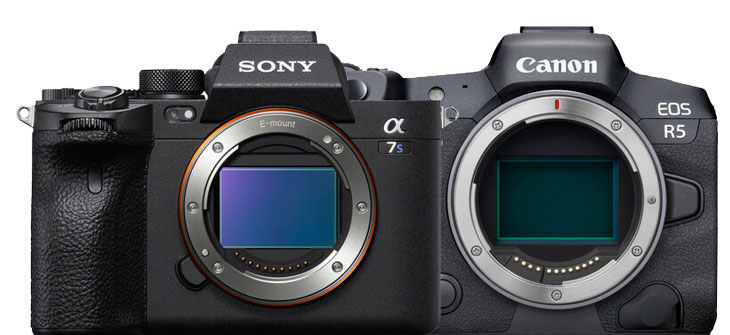
Sony A7S III vs Canon EOS R5 – We have done specs comparison of the recently announced cameras. Let’s take a look
1. Sensor Comparison – Sony A7S III vs Canon EOS R5
If we look at the sensor of both cameras then it looks like they are made for a different purpose, The Sony A7S III uses 12MP BSI CMOS sensor chip which is, of course, 2X faster than of A7S II and now allow us to push the base ISO range up to 40. So, sensitivity wise the sensor will sure outperform the Canon EOS R5 45 MP sensor. But, due to the lower 12MP resolution, the Sony A7S III camera limited to a specific group of shooters.
Get the Sony A7S III Camera from B&H Store | Get EOS R5 from Amazon.com | B&H Store
2. Video centered camera, still photographers may suffocate with 12MP resolution
The 12MP resolution will prevent many professional users to use the Sony A7S III as their primary still shooting machine. On the other side, with 45MP resolution and nearly 2X More Shooting speed, the Canon EOS R5 may become the first choice for wedding, event, and sports shooter.
| Lens Mount |
Sony E |
Canon RF |
| Camera Format |
Full-Frame (1x Crop Factor) |
Full-Frame (1x Crop Factor) |
| Pixels |
Actual: 12.9 Megapixel
Effective: 12.1 Megapixel |
Actual: 47.1 Megapixel
Effective: 45.0 Megapixel |
| Maximum Resolution |
4240 x 2832 |
8192 x 5464 |
| Aspect Ratio |
1:1, 3:2, 4:3, 16:9 |
1:1, 3:2, 4:3, 16:9 |
| Sensor Type |
CMOS |
CMOS |
| Sensor Size |
35.6 x 23.8 mm |
36 x 24 mm |
| Image File Format |
JPEG, Raw, HEIF |
JPEG, Raw, HEIF |
| Bit Depth |
14-Bit |
14-Bit |
| Image Stabilization |
Sensor-Shift, 5-Axis |
Sensor-Shift, 5-Axis |
3. Sony A7S III – Best Low-light Shooting Mirrorless Camera of 2020?
As we all know Sony is the only FF sensor maker that creates FF BSI CMOS sensor commercially for FF sensor cameras. Canon EOS R6 with lowest 20MP resolution after A7S III uses a plain CMOS sensor and due to that the ISO performance of the camera is slightly better than Canon EOS R5, But, not as good as of Sony A7S III camera. One of the best things with the Sony A7S III camera is you can push your ISO from base ISO 40 to 204800. Sony A7S III undoubtedly best camera when you want to work with natural light aka low-light environment.
4. Sony A7S III forced limitations – Less Continuous shooting speed than 45MP EOS R5
Despite having a new 12MP sensor with 2X readout speed and a brand new image processor, the shooting speed of the camera is even lower than the Canon EOS R5 camera with 45MP massive resolution. It’s a clear indication that Sony wants to protect the sales of their upcoming flagship A9 series camera by limiting the speed of A7S III.
| ISO Sensitivity |
Auto, 80 to 102400 (Extended: 40 to 409600) |
Auto, 100 to 51200 (Extended: 100 to 102400) |
| Shutter Speed |
1/8000 to 30 Second
Bulb Mode |
Mechanical Shutter
1/8000 to 30 Seconds
Electronic Front Curtain Shutter
1/8000 to 30 Seconds
Electronic Shutter
1/8000 to 0.5 Seconds |
| Metering Method |
Center-Weighted Average, Highlight Weighted, Multiple, Spot |
Center-Weighted Average, Evaluative, Partial, Spot |
| Exposure Modes |
Aperture Priority, Manual, Program, Shutter Priority |
Aperture Priority, Manual, Program, Shutter Priority |
| Exposure Compensation |
-5 to +5 EV (1/3 EV Steps) |
-3 to +3 EV (1/3, 1/2 EV Steps) |
| Metering Range |
-3 to 20 EV |
-3 to 20 EV |
| White Balance |
Auto, Cloudy, Color Temperature, Color Temperature Filter, Custom, Daylight, Flash, Fluorescent (Cool White), Fluorescent (Day White), Fluorescent (Daylight), Fluorescent (Warm White), Incandescent, Shade, Underwater |
Auto, Cloudy, Color Temperature, Custom, Daylight, Flash, Fluorescent (White), Shade, Tungsten |
| Continuous Shooting |
Up to 10 fps at 12.1 MP for up to 1000 Frames (Raw) / 1000 Frames (JPEG)
Up to 8 fps at 12.1 MP
Up to 6 fps at 12.1 MP
Up to 3 fps at 12.1 MP |
Mechanical Shutter
Up to 12 fps at 45 MP for up to 180 Frames (Raw) / 350 Frames (JPEG)
Electronic Shutter
Up to 20 fps at 45 MP for up to 83 Frames (Raw) / 170 Frames (JPEG) |
| Interval Recording |
Yes |
Yes |
| Self-Timer |
2/5/10-Second Delay |
2/10-Second Delay |
5. Sony A7S III vs Canon EOS R5 – Best Video Camera
As you can see the Canon EOS R5 camera is capable to deliver 8K resolution and you can record it internally at 4:2:2 10bit. But after 20 min of continuous use of 8K video mode, users may face the overheating issue. The good news is for the first time, the Canon Mirrorless camera is using the Oversampling method while using the entire sensor resolution areas to create a 4K video file.
Sony, on the other hand, limited to 4k Video recording mode up to 60FPS, and as per Sony claims the camera doesn’t overheat even you use it for 1 hour of time. But as usual no 6K or 8K recording mode available in Sony due to the lower resolution sensor.
6. Sony A7S III is more Usable than Canon EOS R5 in real-world condition
If you are shooting long interviews and creating a short movie than it would be more feasible to use the Sony A7S III camera than of Canon EOS R5. At the same time, the Sony A7S III camera doesn’t have any recording limit and continuously records your videos till your card runs out.
| Recording Modes |
H.265/XAVC HS 4:2:2 10-Bit
UHD 4K (3840 x 2160) at 23.976p/25p/29.97p/50p/59.94p/100p/119.88p [50 to 280 Mb/s]
H.265/XAVC HS 4:2:0 10-Bit
UHD 4K (3840 x 2160) at 23.976p/25p/29.97p/50p/59.94p/100p/119.88p [30 to 200 Mb/s]
H.264/XAVC S-I 4:2:2 10-Bit
UHD 4K (3840 x 2160) at 23.976p/25p/29.97p/50p/59.94p [240 to 600 Mb/s]
Full HD (1920 x 1080) at 23.976p/25p/29.97p/50p/59.94p [89 to 222 Mb/s]
H.264/XAVC S 4:2:2 10-Bit
UHD 4K (3840 x 2160) at 23.976p/25p/29.97p/50p/59.94p/100p/119.88p [100 to 280 Mb/s]
Full HD (1920 x 1080) at 23.976p/25p/29.97p/50p/59.94p/100p/119.88p [50 Mb/s]
H.264/XAVC S 4:2:0 8-Bit
UHD 4K (3840 x 2160) at 23.976p/25p/29.97p/50p/59.94p/100p/119.88p [60 to 200 Mb/s]
Full HD (1920 x 1080) at 23.976p/25p/29.97p/50p/59.94p/100p/119.88p [16 to 100 Mb/s] |
Raw 12-Bit
DCI 8K (8192 x 4320) at 23.976p/24.00p/25p/29.97p [2600 Mb/s]
H.265 4:2:2 10-Bit
DCI 8K (8192 x 4320) at 23.976p/24.00p/25p/29.97p [680 to 1300 Mb/s]
UHD 8K (7680 x 4320) at 23.976p/25p/29.97p [680 to 1300 Mb/s]
DCI 4K (4096 x 2160) at 23.976p/24.00p/25p/29.97p/59.94p/100p/119.88p [170 to 1880 Mb/s]
UHD 4K (3840 x 2160) at 23.976p/25p/29.97p/50p/59.94p/100p/119.88p [170 to 1880 Mb/s]
Full HD (1920 x 1080) at 23.976p/25p/29.97p/50p/59.94p [28 to 230 Mb/s]
H.264 4:2:0 8-Bit
DCI 8K (8192 x 4320) at 23.976p/24.00p/25p/29.97p [470 to 1300 Mb/s]
UHD 8K (7680 x 4320) at 23.976p/25p/29.97p [470 to 1300 Mb/s]
DCI 4K (4096 x 2160) at 23.976p/24.00p/25p/29.97p/50p/59.94p/100p/119.88p [120 to 1880 Mb/s]
UHD 4K (3840 x 2160) at 23.976p/25p/29.97p/50p/59.94p/100p/119.88p [120 to 1880 Mb/s]
Full HD (1920 x 1080) at 23.976p/25p/29.97p/50p/59.94p [12 to 180 Mb/s] |
| External Recording Modes |
Raw 16-Bit
4.2K (4264 x 2408) up to 59.94p
4:2:2 10-Bit
UHD 4K (3840 x 2160) at 23.976p/25p/29.97p/50p/59.94p
Full HD (1920 x 1080) at 23.976p/50p/59.94p
Full HD (1920 x 1080) at 50i/59.94i
4:2:0 8-Bit
UHD 4K (3840 x 2160) at 23.976p/25p/29.97p/50p/59.94p
Full HD (1920 x 1080) at 23.976p/50p/59.94p
Full HD (1920 x 1080) at 50i/59.94i |
4:2:2 10-Bit
DCI 4K (4096 x 2160) up to 59.94p
UHD 4K (3840 x 2160) up to 59.94p |
| Recording Limit |
Unlimited |
Up to 29 Minutes, 59 Seconds |
| Video Encoding |
NTSC/PAL |
NTSC/PAL |
| Audio Recording |
Built-In Microphone (Stereo)
External Microphone Input |
Built-In Microphone (Stereo)
External Microphone Input |
| Audio File Format |
AAC LC, AC3, Dolby Digital 2ch, Linear PCM (Stereo) |
AAC, Linear PCM |
| Live Streaming |
Yes |
|
|
7. Autofocus – Sony A7S III vs Canon EOS R5
Canon has now upgraded its DPAF system and now the camera quickly tracks animal eyes and even bird eye while shooting videos or still. The AF system is also very fast and accurate. The Canon EOS R5 supports you even when you are using the 20FPS continuous shooting speed. More or less both of them are camera makers makes the world best AF system, you be not disappointed from any of the two camera.
| Focus Type |
Auto and Manual Focus |
Auto and Manual Focus |
| Focus Mode |
Continuous-Servo AF (C), Direct Manual Focus (DMF), Manual Focus (M), Single-Servo AF (S) |
Continuous-Servo AF (C), Manual Focus (M), Single-Servo AF (S) |
| Autofocus Points |
Phase Detection: 759
Contrast Detection: 425 |
Phase Detection: 1053 |
| Autofocus Sensitivity |
-6 to +20 EV |
-6 to +20 EV |
8. Sony A7S III features a better viewfinder
Sony A7S III us using a higher resolution viewfinder with a more magnification ratio than of Canon EOS R5. And, Canon EOS R5 features a better display unit system than of A7S III.
| Viewfinder Type |
Electronic (OLED) |
Electronic (OLED) |
| Viewfinder Size |
0.64″ |
0.5″ |
| Viewfinder Resolution |
9,437,184 Dot |
5,760,000 Dot |
| Viewfinder Eye Point |
25 mm |
23 mm |
| Viewfinder Coverage |
100% |
100% |
| Viewfinder Magnification |
Approx. 0.9x |
Approx. 0.76x |
| Diopter Adjustment |
-4 to +3 |
-4 to +2 |
| Monitor Size |
3″ |
3.2″ |
| Monitor Resolution |
1,440,000 Dot |
2,100,000 Dot |
| Monitor Type |
Articulating Touchscreen LCD |
Free-Angle Tilting Touchscreen LCD |
Physical
| Battery |
1 x NP-FZ100 Rechargeable Lithium-Ion, 7.2 VDC, 2280 mAh (Approx. 600 Shots) |
1 x LP-E6NH Rechargeable Lithium-Ion |
| Dimensions (W x H x D) |
5.07 x 3.81 x 2.74″ / 128.9 x 96.9 x 69.7 mm |
5.43 x 3.84 x 3.46″ / 138 x 97.5 x 88 mm |
| Weight |
1.35 lb / 614 g (Body Only) |
1.62 lb / 738 g (Body with Battery and Memory) |
9. Conclusion:
For still shooters, EOS R5 is the best option and Video A7S III is more user friendly.
Get the Sony A7S III Camera from B&H Store | Get EOS R5 from Amazon.com | B&H Store
By admin, on July 28th, 2020
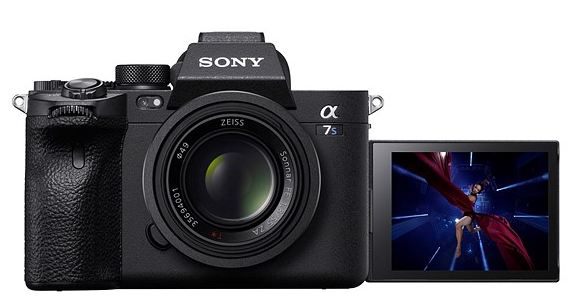
Sony finally announced the long-rumored Sony A7S III camera, the camera features a redesigned 12MP BSI CMOS Sensor. The camera also features the latest generation of the BionZ XR image processor. The camera features no overheating issue even when used for 1 hour at 4k 60p as claimed by the camera maker.
Sony A7S III camera features a native ISO range of 80-102400, which can expand to 40-409600. So, specifically for low-light video work, the camera will work like a charm. Sony claims that the sensor is brand new and features 2X readout speed compared to the older gen. of the Sony A7S II sensor which in turn reduces the rolling shutter effect of the sensor.
Sony A7S III Major Features
- 12MP BSI CMOS sensor
- Bionz XR processor
- On-sensor phase detection
- 759-Point Fast Hybrid AF
- ISO 80-102,400 (expandable to 40-409,600)
- 9.44M dot EVF with 0.91x magnification
- 4K video at up to 120p, 60p for ‘at least an hour’
- 16-bit Raw video output at up to 60p
- 10-bit 4:2:2 internal capture (in codecs including H.265 and All-I H.264)
- Fully articulating LCD
- 5-axis in-body stabilization with Steady shot active mode
- Twin card slots that each accept either SD or CFexpress Type A
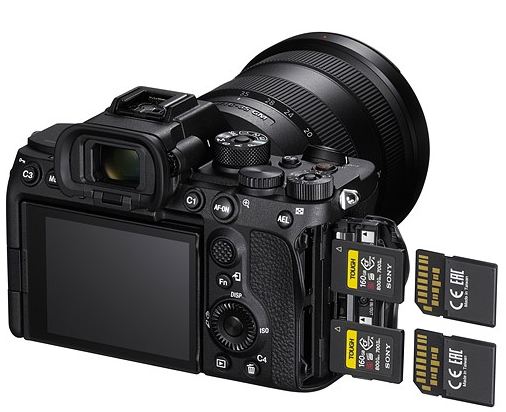
Finally, Sony added a Var-angle display screen to its Fullframe cameras after introducing it in Sony ZV1 camera.The menu system has been refined and is easier to navigate. The camera has a full-size HDMI port along with headphones and mic sockets, dual-band Wi-Fi, and support for USB Power Delivery. It has twin dual-format memory card slots, both of which can handle an SD or CFexpress Type A card.
The a7S III will be available in late September for $3499.
Get the Sony A7S III Camera from B&H Store
1. Sony A7S III Press Release
Highly Anticipated Sony Alpha 7S III Combines Supreme Imaging Performance with Classic “S” Series Sensitivity
New Alpha 7S III Empowers Creators with 4K 120P[i] Video, 10-bit 4:2:2 Recording, 15+ Stop Dynamic Range[ii], Improved AF Performance and More
- Newly developed BIONZ XR™ image processing engine with eight times more processing power[iii] and a brand new 12.1-megapixel (, effective) back-illuminated full-frame Exmor R™ CMOS image sensor, significantly reduced rolling shutter effect[iv]
- Ultra-high sensitivity with ISO range expandable from 40 – 409,600[v], and improved image quality by approximately 1 stop noise reduction[iv] in the middle and high sensitivity ranges
- Video recording capabilities include 4K 120p[i], 10 bit 4:2:2 color depth, All-Intra recording, XAVC HS format with H.265 codec and more
- 15+ stop dynamic range for movies[ii]
- 4K 60p 16-bit RAW video HDMI output for the first time in the Alpha™ series
- Fast Hybrid AF system with 759 point phase-detection[vi] AF sensors covering 92% of image sensor
- Enhanced Real-time Eye AF for movie recording[vii] and still image recording
- New heat dissipating mechanism and dual slot relay recording enables over one-hour long 4K 60p 10-bit 4:2:2 movie shooting[viii]
- 5-axis optical in-body image stabilization supports handheld movie shooting, with added Active Mode [ix] to support especially difficult handheld movie shooting
- World’s brightest[x] and largest[x] new 0.64-type 9.44 million-dot OLED electronic viewfinder
- Side Opening variable angle LCD screen enhances shooting flexibility
- Completely redesigned menu system with touch screen interface and touch operation
- High-speed continuous still image shooting at up to 10fps[xi] for more than 1,000 consecutive uncompressed RAW images[xii] with full AF / AE tracking
- Dual CFexpress Type A card slots that enable high speed data processing while keeping the compact size
SAN DIEGO – July 28, 2020 –Today, Sony Electronics Inc. announced the long-awaited addition to its acclaimed Alpha 7S full-frame mirrorless camera series — the Alpha 7S III (model ILCE-7SM3).
Featuring a brand new 12.1MP (approx., effective) back-illuminated full-frame image sensor with ultra-high sensitivity and 15+ stop wide dynamic range[ii], a host of impressive video recording capabilities including 4K 120p[i] and 10-bit 4:2:2 color depth, a new heat dissipating mechanism, dual slot relay recording enabling over one-hour of 4K 60p movie shooting[viii], a new autofocus system, and touch screen interface and side flip LCD screen, the new Alpha 7S III will become the ultimate creative tool for video professionals and all types of hybrid still/video shooters.
“The Alpha 7S III is the ultimate representation of Sony’s passion to solve our customers’ pain points,”, said Neal Manowitz, deputy president for Imaging Products and Solutions Americas at Sony Electronics. “We are always listening to our customers’ feedback, pushing hard to deliver innovation that goes far beyond their expectations. There is no better example than this new camera. Combining classic S series sensitivity with a feature set, performance level and user experience that is simply unmatched in the market today — at any price level — the Alpha 7S III opens up a new world of possibilities for today’s creators.”
The system architecture for the new Alpha 7S III has been completely redesigned to deliver exceptional video and still shooting performance. The new 35mm full-frame 12.1MP (approx., effective) back-illuminated Exmor R™ CMOS image sensor reduces rolling shutter by up to three times[iv] and utilizes a variety of advanced light-gathering techniques to ensure high-sensitivity with low noise, allowing users to shoot in low-light situations without needing large-scale lighting setups. In addition to improved image quality, this new image sensor includes a focal plane phase-detection AF system for the first time in an S-series camera.
To compliment the new sensor, the Alpha 7S III also includes a new BIONZ XR™ image processing engine that provides up to eight times more processing power[iii], minimizes processing latency, and enables many of the hallmark still and imaging features of the camera. The new system also includes the world’s brightest[x] and largest[x] 9.44 million-dot (approx.) OLED electronic eye-level viewfinder and is the world’s first camera[x] with dual CFexpress Type A card slots, enabling high-speed data transfer in a compact size.
Professional Video Workflow Solutions
The Alpha 7S III offers in-camera 4K recording up to 120 frames per secondi, 10-bit depth and 4:2:2 color sampling, producing stunning video recording. The new camera offers a more flexible and efficient post-production workflow with a variety of advanced movie recording modes such as All-Intra[xiii] and MPEG-H HEVC/H.265 coding (XAVC HS™)[xiv]. The Alpha 7S III makes it easy to integrate video recordings with other professional camcorders by providing three color gamut settings S-Gamut, S-Gamut3, and S-Gamut3.Cine, allowing users to easily match footage shot on the Alpha 7S III with footage shot on the professional camcorders simplifying multi-camera post-production workflow. In addition to S-Log3 gamma curves, the Alpha 7S III supports an HLG (Hybrid Log-Gamma) picture profile with minimum post-production. The Alpha 7S III also allows up to 4K 60p 16-bit RAW output[xv] to an external recorder via HDMI Type-A[xvi] connector, offering additional post-production flexibility.
Improved Image Quality
The new CMOS image sensor and BIONZ XR™ image processing engine in the Alpha 7S III delivers legendary S-series sensitivity with significantly enhanced color reproduction and texture renderings for improved overall image quality. The base ISO has been lowered to 80, resulting in a normal range of 80-102,400 (expandable to 80-409,600 for video and 40-409,600 for stills) to provide more flexible ISO plus wide dynamic range with low noise at all settings. It offers improved image quality by approximately 1 stop of noise reduction[iv] in the middle and high sensitivity ranges.
The colors and textures of foliage, human skin, and more are ideally and consistently reproduced without dependence on light sources. Gradation rendering has also been refined for better looking skin tones and highlight roll-off in portraits. It also improves AWB (Auto White Balance) performance with a new “Visible light + IR Sensor” that helps to achieve more precise white balance under artificial lighting, including fluorescent and LED lights.
Versatile Operability
Advanced Autofocus Performance for Hybrid use
For the first time in an Alpha 7S series camera, the Alpha 7S III offers Fast Hybrid AF by combining phase-detection and contrast-detection AF, giving it the ability to track subjects over a wide area with outstanding speed, precision and smoothness, even when using a narrow depth of field. Fine focus expression is possible with Sony’s E-mount lenses.
For environments with a lot of movement, Real-time Tracking and Real-time Eye AF are available to maintain constant focus on the intended subject. Sony’s advanced Real-time Eye AF improves detection performance by 30% over the previous system[iii], thanks to the new image processing engine. It ensures accurate, reliable detection, even when the subject’s face looks away. Real-time Tracking is initiated simply by touching the subject on the screen. Real-time Eye AF is automatically initiated when an eye is detected.
Flexible Autofocus Settings for Movie Shooting
Based on customer feedback, the camera includes several AF features for professional users including AF Transition Speed in seven settings, to easily create rack-focus transitions, and five AF Subject Shift Sensitivity settings, which allows the user to customize how easily AF will switch or stay with the locked-on subject. Touch Tracking allows user to not only initiate Real-time Tracking, but also compose and shoot while using a gimbal or while shooting solo. It’s now possible to Touch Focus during manual focus mode on the LCD screen or remotely from the Imaging Edge Mobile application[xvii].
New Heat-dissipating Structure
The Alpha 7S III’s design has been updated to ensure effective heat dissipation and minimizes overheating — even during extended continuous recording sessions at 4K 60p 10-bit 4:2:2 video lasting an hour or more[viii]. A newly developed unique heat dissipating structure keeps the image sensor and image processing engine temperatures within their normal operating ranges, preventing overheating while maintaining compact body dimensions. The new heat-dissipating structure requires no fan or cabinet vents allowing Alpha 7S III to maintain dust and moisture resistance[xviii].
Movie Assist Functions
For video on-the-go, the Alpha 7S III is the first Alpha series camera to include Active Modeix with 5-axis optical in-body image stabilization to support especially difficult handheld movie shooting. It is also the first Alpha series E-mount body to feature a side-opening vari-angle rear screen, perfect for gimbal-mounted shots, complicated angles, handheld operation and more. The screen rotates sideways, up and down, and features a 3.0 type 1.44 million-dot (approx.) touch panel LCD monitor, for optimal visibility even in bright outdoor environments.
In addition, the Alpha 7S III provides a selection of new Creative Look with 10 presets that can be used for both photo and video shoots, making it easy to create interesting moods right in the camera to be used as is or customized by the user.
A digital audio interface has been added to the camera’s Multi-Interface (MI) Shoe for clearer audio recordings from a compatible Sony external microphone. Used with Sony’s XLR-K3M XLR Adaptor Kit, the Alpha 7S III provides 4-channel 24-bit digital audio recording capability in an Alpha series camera for the first time. Like other MI shoe accessories, no cables or batteries are required, providing unrestrained freedom for Alpha system moviemaking.
Additional movie assist functions include a redesigned monitor display with a bold, clearly visible red frame that makes it clear when recording is in progress even when mounted on a rig or gimbal, custom zoom settings, adjustable white balance while recording, display rotation, interval recording, still extraction from movies and more.
Outstanding Still Image Photography
The Alpha 7S III includes a fast Hybrid AF system with 759 phase-detection AF points covering 92% of the image sensor. The camera can also achieve high AF precision to accurately and reliably focus in light down to EV-6[xix], where subjects are difficult to see clearly even with the naked eye. Users can continuously shoot more than 1,000 uncompressed RAW[xii] images at up to 10fps, or up to 8fps in live view mode, with either the mechanical or electronic shutter.
The Alpha 7S III also includes the world’s first[x] 9.44 million-dot (approx.), 0.64 type Quad-XGA electronic viewfinder with a high-definition OLED display and refined. The Alpha 7S III viewfinder offers a 0.90x viewfinder magnification[xx], 41° diagonal field of view, 25mm high eyepoint for clear, low-distortion corner to corner viewing. It is also dust, fog and moisture resistant[xviii], extremely responsive, and has switchable modes for different subject types. Every aspect of the Alpha 7S III viewfinder has been designed and refined for a professional workflow.
For the first time in one of Sony’s digital cameras, the Alpha 7S III includes HEIF (High Efficiency Image File Format) allowing for smooth 10-bit gradations and advanced compression technology to maintain image quality while significantly reducing file size and saving storage space. HEIF stills shot in this mode can be played back on a compatible Sony HDR (HLG) TV via a direct HDMI Type-A connection from the Alpha 7S III, delivering true-to-life dynamic range[xxi].
Versatile Design Made for the Pros
CFexpress Type A for High-speed Data Transfer
In another world’s firstx, the Alpha 7S III features two CFexpress Type A compatible media slots which also support UHS-I and UHS-II SDXC/SDHC cards, enabling high write-and-read speeds while keeping the camera body compact in size. CFexpress Type A cards are ideally suited to high-speed continuous RAW still image shooting as well as 4K 120pi movie recording at high bit rates[xxii], providing next-generation write speeds that can quickly clear the buffers of cameras that generate high volumes of still image and movie data. High-speed data transfer to a PC is possible at about 1.7 times faster[xxiii] than that of SD card. The dual slots can be set to relay mode for extended continuous recording of even the highest bit rate data as well as simultaneous recording and sort by format type recording.
Revised Menu System with Enhanced Touch Screen
The Alpha 7S III also features a revised menu structure for easier navigation and touch-responsive menu operation for faster, more intuitive control. For creators who shoot both stills and movies, separate settings can now be stored for stills and movie shooting for quick transition between the two.
High Reliability Gives Creators New Freedom
Professional users need more than just refined features and performance. They also need the reliability and durability demanded of any professional tool. The Alpha 7S III features a redesigned grip for greater comfort and a secure hold, an improved dust removal feature, plus dust and moisture resistance[xviii] that maximizes reliability in challenging environments. It includes a durable, reliable HDMI Type-A connector, and is the first Alpha series camera to support USB PD (Power Delivery), allowing higher power to be supplied from an external source so that users can continue to record for extended periods with minimal internal battery usage.
Advanced Connectivity for Professional Working Environments
The Alpha 7S III has been designed and configured to support photo and video journalists and sports shooters who need to deliver stills or movies as quickly as possible with several advanced connectivity options. The camera supports 5GHz[xxiv]/2.4GHz wireless LAN (IEEE 802.11ac) and offers MIMO (multiple-input and multiple-output) to improve communication quality by using multiple antennas, doubling in speed when compared to the Alpha7R IV. It also carries new USB tethering support[xxv]. When connected to a 5G (5th generation technology standard for cellular networks) compatible device via USB cable, it is possible to use 5G network for fast and stable FTP file transfer[xxvi]. USB to high-speed wired LAN connectivity[xxvii] also offers stable and fast FTP transfer for both movies and stills. A USB Type-C™ connector that supports fast SuperSpeed USB 5Gbps (USB 3.2) data transfer is provided, enabling high-speed PC Remote (tethered) data transfer available for smooth handling of large image files.
Pricing and Availability
The new Alpha 7S III Full-frame Interchangeable Lens Camera will be available in September 2020 for approximately $3,499.99 USD and $4,799.99 CAD. It will be sold at a variety of Sony’s authorized dealers throughout North America.
Exclusive stories and exciting new content shot with the new camera and Sony’s other imaging products can be found at www.alphauniverse.com, a site created to educate and inspire all fans and customers of Sony α – Alpha.
For detailed coverage on the new product on Alpha Universe, please visit this LINK.
The new content will also be posted directly at the Sony Photo Gallery.
2. Sony A7S III Specifications
By admin, on July 27th, 2020
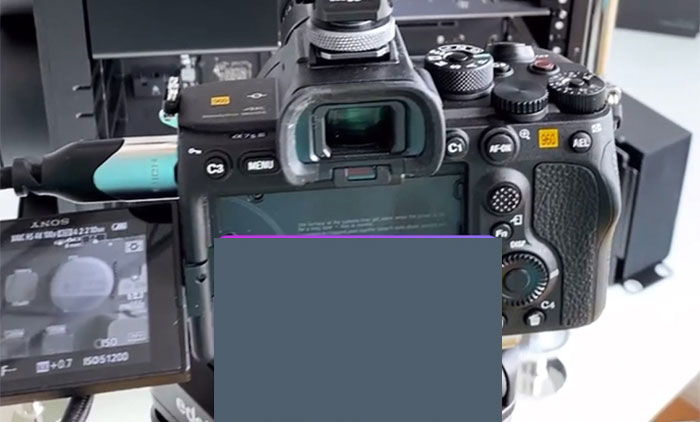
One more Sony A7S III image caught floating over the web, the image looks similar to the previously shared A7S III image. Take a look at the specification
Sony A7S III Rumored Specification
- New 12MP sensor with fast readout and S-Cinetone color science
- records FHD 240fps, 4k120fps 10bit 4:2:2 and 4K120fps raw over HDMI
- ONLY Up to 4k60 will be 10bit 4:2:2 internal.
- Downsampled 1080p from 4K, making this the best 1080p hybrid ever made! No line skipping or pixel binning.
- No internal RAW.
- 600mbps bitrate
- Base ISO 160 for S-LOG3
- no Dual ISO
- Max ISO 409600 (video)
- 16-bit RAW output
- 15 stops dynamic range
- Movie Edit add-on compatibility for Image Stabilization in post
- world’s highest resolution new 9.44 million dot EVF (QXGA resolution)
- UHS-II card and CFexpress Type A card support (each of the two slots takes them both!)Lf
- Two USB-c, one micro HDMI, no flash sync port.
- price around 4.000 Euro (A7sIII now listed at BHphoto and in Germany at Fotokoch)
- announcement on July 28
- shipment start mid-August
We will update to you soon as we get the official images and detailed specification of the camera.
Get LIVE RUMORS –> FACEBOOK | TWITTER | INSTAGRAM to get live news — > –>see more Sony Alpha Rumor
By admin, on July 18th, 2020
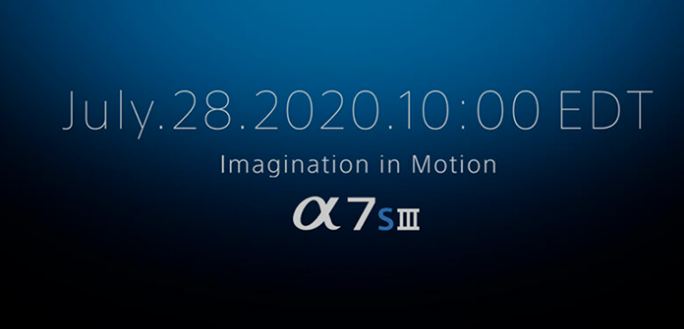
We are waiting for Sony A7S III camera official PR images and a detailed set of specifications from trusted sources. Before that, take a look at the set of info we already have related to the Sony A7S III camera
Sony A7S III Rumored Specification
- New 12MP sensor (Maybe Quad pixel Array Tech)
- records FHD 240fps, 4k 120fps 10bit 4:2:2 and 4K 120fps raw over HDMI
- 600mbps bitrate
- Base ISO 160 for S-LOG3
- no Dual ISO
- Max ISO 409600 (video)
- 16bit RAW output
- 15 stops dynamic range
- world’s highest resolution new 9.44 million dot EVF (QXGA resolution)
- new kind of passive cooling system
- no overheating, no recording time limits
- UHSII card support
- Looks pretty similar to a Sony A7rIV.
- fully articulating screen like the one used by the Sony ZV-1.
- announcement late July
- shipment start mid August
We will update you soon as we have official images and detailed specification of the camera
Get LIVE RUMORS –> FACEBOOK | TWITTER | INSTAGRAM to get live news — > –>see more Sony Alpha Rumor
source
By admin, on July 3rd, 2020
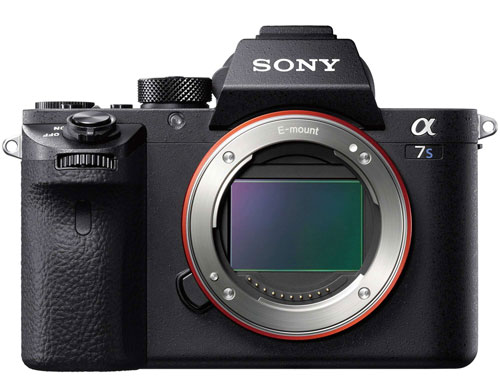
It’s almost confirmed that the Sony A7S III camera is coming in the month of August 2020. In an interview, Kenji Tanaka, VP, and Senior General Manager of Sony’s Business Unit confirmed that the Sony A7S III camera will arrive this summer 2020.
Sony A7S III Arrival Confirmation by Sony itself [No Rumor]
Kenji Tanaka, VP We’ve received many requests, especially from professional video content creators, and I can confirm that a successor to the Alpha 7S II will be coming, later this summer. Right now we’re focused on the launch of the new camera, and it will be a complete redesign of the whole system, including the image sensor. Everything is new.
No Sony A7S III Rumored Specification from Reliable Sources
I don’t want to keep you in confusion, have had more than 10 emails last week from fake people with the subject title “Sony A7S III Specs” The fake specs list also includes the cooling vent rumor of Sony A7S III (many websites spreading the same rumor that Sony A7S III will use a cooling vent, I don’t believe it’s true). I am waiting for some reliable information. And as soon as I get, will publish it soon.
Get LIVE RUMORS –> FACEBOOK | TWITTER | INSTAGRAM to get live news — > –>see more Sony Alpha Rumor
source
By admin, on June 25th, 2020
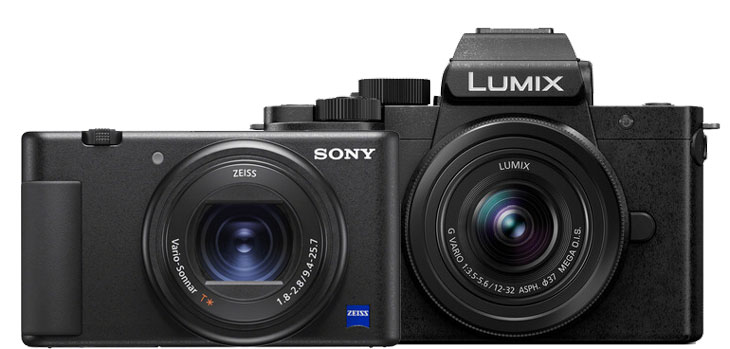
Well, let’s compare the Sony ZV1 camera with the Panasonic G100 camera. Let’s see which one is a more suitable camera for Vlogging purposes. Let’s jump on the spec table of both to see the Major difference between the two.
1. Interchangeable lens vs Compact – Which one is better
Of course, Sony has given as a limited focal length of 27-70mm, whereas with Panasonic G100 we are getting 12-32mm lens which is more user friendly and covers more area/frame. So, Panasonic does have an added advantage of interchangeable lenses.
| Camera Format |
Panasonic G100 |
Sony ZV1 |
| Sensor Size |
17.3 x 13 mm |
1 inch |
| Image File Format |
JPEG, Raw |
JPEG, Raw |
| Image Stabilization |
Optical, EIS |
Optical, EIS |
2. Panasonic G100 Camera features Larger Sensor
Panasonic G100 Camera features a larger M4/3 format sensor compared to Sony ZV1 Camera. The Sony ZV1 uses a 1-inch sensor. Both sensors feature the same resolution, but due to the larger sensor area, we may notice some significant advantage in Panasonic G100 Camera while shooting still images.
3. Missing Hybrid Autofocus
Panasonic G100 uses the same DFD AF system used by the Panasonic line-up of cameras. We know the DFD AF system is not as fast as we have a Hybrid AF system in the Sony ZV1 camera. And, one of the biggest disadvantages of DFD is it needs a good amount of light to acquire AF, otherwise, it will take a bot more time to acquire AF. So, if you are shooting vlogs in low-light environment
4. Customized AF Modes inside Sony ZV1 Camera for Vloggers
In Sony ZV1 camera we are getting a custom-tailored AF mo0des inside the camera. When you activated the product showcase mode the camera quickly acquires AF at products without any lag or hunting. So, the AF system of Sony ZV1 camera is more user friendly, accurate and fast.
|
Panasonic G100 |
Sony ZV1 |
| ISO Sensitivity |
200 to 25600 (Extended: 100 to 25600) |
100 to 12800 (Extended: 64 to 25600) |
| Metering Method |
Center-Weighted Average, Multiple, Spot |
Average, Center-Weighted Average, Multi, Spot, Face Priority |
| White Balance |
Auto, Cloudy, Color Temperature, Daylight, Flash, Incandescent, Shade, White Set 1, White Set 2, White Set 3, White Set 4 |
Auto, Cloudy, Color Temperature, Custom, Daylight, Flash, Fluorescent (Cool White), Fluorescent (Day White), Fluorescent (Daylight), Fluorescent (Warm White), Incandescent, Shade, Underwater |
| Continuous shooting |
10 FPS |
Up to 24 fps at 20.1 MP |
|
|
|
5. Best Video Camera – Sony ZV1 vs Panasonic G100
Sony ZV1 Camera – With the Sony ZV1 camera we are also getting the HLG (Hybrid Log-Gamma) support, along with the BT.2020 color space, for recording within a wide color gamut and, in addition to S-Log2, S-Log3 is also available for producing an effective 14-stop dynamic range with increased grading control in the shadow to mid-tone regions of the image.
Panasonic G100 – V-Log L has been pre-installed and is used to capture a flat, neutral gamma curve well-suited for grading in conjunction with a LUT for greater control over color.
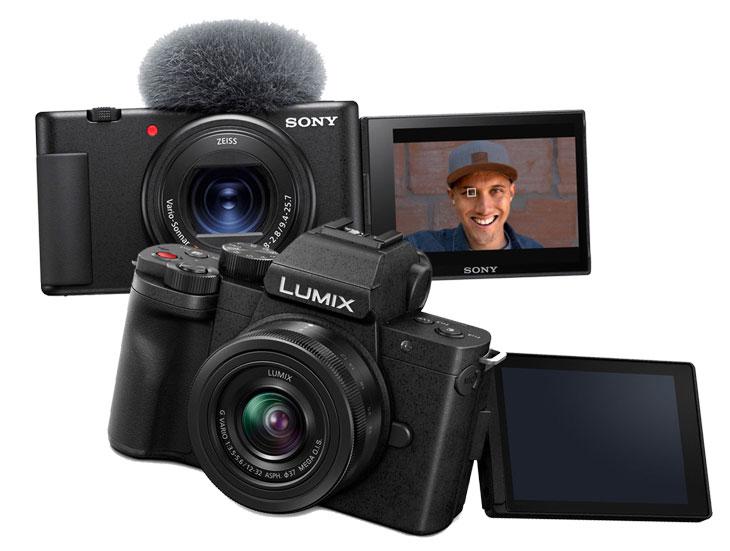
| Recording Modes |
MP4 4:2:0 8-Bit
UHD 4K (3840 x 2160) at 23.976p/29.97p
Full HD (1920 x 1080) at 29.97p/59.94p |
MP4/XAVC S
UHD 4K (3840 x 2160) at 23.976p/25p/29.97p [60 to 100 Mb/s]
Full HD (1920 x 1080) at 23.976p/25p/29.97p/50p/59.94p/100p/119.88p [16 to 100 Mb/s]
AVCHD/MP4
Full HD (1920 x 1080) at 50i/59.94i [17 to 24 Mb/s] |
| Time Limit |
Max 30min Full HD 30FPS |
Unlimited |
| Video Encoding |
NTSC |
NTSC/PAL |
| Audio Recording |
Built-In Microphone (Stereo)
External Microphone Input |
Built-In Microphone (Stereo)
External Microphone Input (Stereo) |
| Audio File Format |
AAC |
AC3, Linear PCM (Stereo) |
| Battery |
1 x DMW-BLG10PP Rechargeable Lithium-Ion, 7.2 VDC, 1025 mAh (Approx. 270 Shots) |
1 x NP-BX1 Rechargeable Lithium-Ion, 3.6 VDC, 1240 mAh (Approx. 260 Shots) |
| Dimensions (W x H x D) |
4.55 x 3.25 x 2.13″ / 115.6 x 82.5 x 54.2 mm (Excluding Protrusions) |
4.15 x 2.36 x 1.71″ / 1.05.5 x 60 x 43.5 mm |
| Weight |
12.42 oz / 352 g (Body with Battery and Memory) |
10.37 oz / 294 g (Body with Battery and Memory) |
some additional features of the Sony ZV1 Camera made specifically for Vloggers.
6. Background Defocus
Background Defocus lets you immediately switch to the maximum aperture setting (f/1.8-2.8), using a custom button function, for isolating your subject using shallow depth of field and bokeh. Built-in ND filter benefits using this mode in bright lighting conditions by controlling overexposure.
7. Face-Priority AE
Face-Priority AE detects the subject’s face and adjusts the exposure to ensure the face is depicted in an ideal brightness, even if walking from a bright place into the shade. The AE technology also suppresses abrupt changes in exposure if the subject quickly turns away from the frame to eliminate unexpected blown-out or extremely dark shots.
8. Best Vlogging Camera between Sony ZV1 and Panasonic G100?
Fast Auto Focus is highly Important for Video – Sony ZV1 camera does super-fast AF while vlogging and also features custom-tailored AF modes for Vloggers. Panasonic DFD isn’t that fast and viewers may get annoyed to see your camera most of the time struggling for AF.
Both Cameras Uses OIS – Both camera image stabilization depends upon OIS [lens based optical image stabilization ]. And if you are a travel vlogger, I will recommend you to get a gimble for your camera if you buy any of these cameras. Panasonic makes worlds best on sensor IBIS system. But, to make the camera more compact they left the IBIS unit.
Panasonic G100 more Coverage but – Pasnonic G100 camera does cover more range (starting from 12mm to 32mm) which is standard vlogging range. Whereas Sony does have tight frame with a 24-70mm compact lens. But, by just having a better coverage area we are not able to recommend you the Panasonic G100 camera due to its slow AF speed and missing IBIS unit inside.
Sony ZV1 is a clear Winner – Sony ZV1 is designed for vloggers and does have many features inside which are specifically researched and developed by keeping vloggers requirements in mind.
Buy Sony ZV1 Camera from B&H Store
Buy Panasonic G100 Camera from B&H Store
By admin, on June 20th, 2020
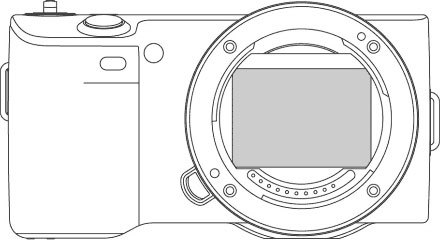
Sony A5 rumors were started back in October 2013, [Also see this] when we saw a NEX body with a full-frame sensor. From the patent, it’s very clear that Sony was working on a compact body-based full-frame camera (without EVF) to lower down the production cost of the model and reach in the hands of mid-range DSLR or Mirrorless users.
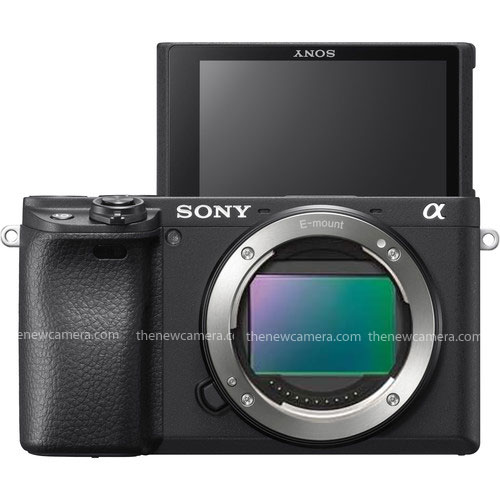
More tough Competition now
As we all know Canon and Nikon both entered in Mirrorless competition from 2018 and now after the introduction of Canon EOS R6 and EOS R5 Sony may get serious competition in High-End Zone. And may lose its existing consumer base too
Sony A7 Series is Popular among new users
Sony A7 III body selling like hotcakes due to its lower price tag and eye-catching core specifications. So, there is a big possibility that Sony may introduce more affordable entry-level bodies near the future to catch new users and gain more market share.
Catch them in the beginning
Since, as we all Know in an interchangeable lens system, a photographer invests more in lenses than in the camera body itself. And once users get attached to a system, it’s not easy for him to move to another.
Sony upcoming cameras 2020
SUBSCRIBE FOR LIVE UPDATES
Get LIVE RUMORS –> FACEBOOK | TWITTER | INSTAGRAM to get live news — > –>see more Sony Alpha Rumor
|
KEEP THIS BLOG ALIVE - Support New Camera Buy Canon Lenses, Buy Music CD or Digital Camera at amazon it helps this site, and you do not pay anything extra, it is just a way to help support this site.

|
















